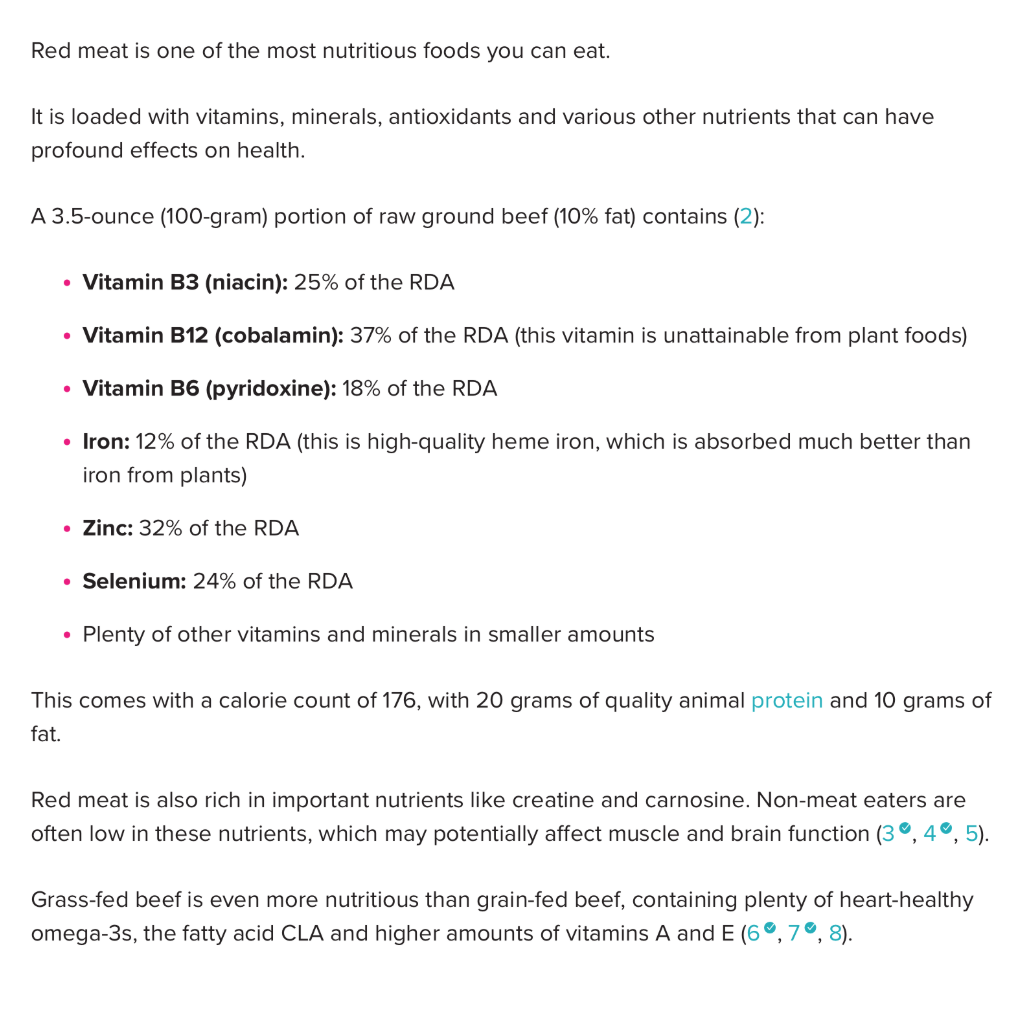Red Meat

February 28, 2020
Red meat. The health of this protein has been questionable for many years. As a result of this, people have either chosen to disregard the findings, slim down on their intake, or cut it out of their diets completely. So, is red meat okay to eat? Should people really be monitoring their intake? The truth is, the answer is not so simple. There must be many different factors to be taken into consideration before definitively stating one side is right or wrong.
However, if you are looking for the simplest answer, here it is: Red meat is okay to eat as long as you are choosing the right type, cut, and method of preparation. If you get all of these right, red meat is not only okay, but it is healthy.
Step 1: Choosing the Right Type
There are four different types of red meat: processed, conventional, and organic grass-fed. The reason for these different types has to do with advances in civilization and the manipulation of animals. The meat from a cow ages ago is different than the meat derived from a cow that was born and raised in a factory, fed grain-based feed and given growth-promoting hormones and antibiotics. Now, many meat products are highly processed after the animals have been slaughtered. Among these chemicals are nitrates and preservatives. Therefore, it is important that if you are eating red meat, you are choosing to eat the grass-fed, organic form. This meat comes from animals that have been naturally fed and raised organically, without drugs and hormones. They also don’t have any artificial chemicals added.
Step 2: Choosing the Right Cut
Aside from the potential long-term dangers of red meat such as cancer, heart disease, diabetes, and premature death, red meat can also be bad for your diet due to a lot of fat and calories. However, many cuts of red meat are low in fat and calories. When looking at the grades of meats, seek out cuts that are labeled “select.” These are the healthiest. A “prime” grade of meat generally has the highest fat content. The best type of red meat to eat is bison, followed by beef, veal, lamb, and pork. Yes, even lamb and pork can be good as long as they are lean. Pork is rich in vitamin B and protein. Considering that bison is not a very common meat to eat and that beef is next on the list for healthiest, let’s look a little deeper into the beefs. First, always go for cuts of beef that are over 93 percent lean. The healthiest cuts are 95 to 97 percent lean. Second, if opting for a steak, choose flank, tenderloin, sirloin, filet mignon or top round roast. Stay away from T-bone or prime rib.
Step 3: Choosing the Right Method of Preparation
Oddly enough, the temperature at which the meat is cooked plays a key factor in determining how healthy it is for you. When meat is cooked at a high temperature, it can form harmful compounds that can cause cancer in animals. While it is not a definite fact as to whether meat causes cancer, there has been evidence such as this to support it. In order to play it safe, here are some tips recommended by Healthline to ensure your meat doesn’t form these harmful substances:
- Use gentler cooking methods like stewing and steaming instead of grilling and frying.
- Minimize cooking at high heats and never expose your meat to a flame.
- Do not eat charred and/or smoked food. If your meat is burnt, cut away the charred pieces.
- If you marinate your meat in garlic, red wine, lemon juice or olive oil, it can reduce HAs significantly.
- If you must cook at a high heat, flip your meat frequently to prevent it from burning.
Overall, my ruling is that it is perfectly okay to eat red meat! It is a very nutritious option and does not have any health consequences as long as you are choosing wisely. Here is a picture of the nutrition information from Healthline

If you want to cut it out, there is nothing wrong with that either! There are plenty of other ways you can get these nutrients.